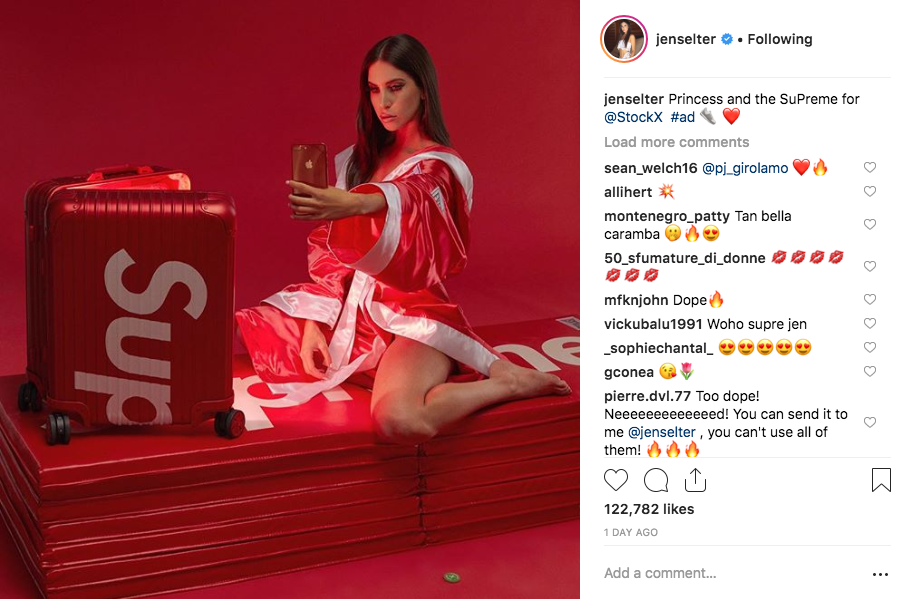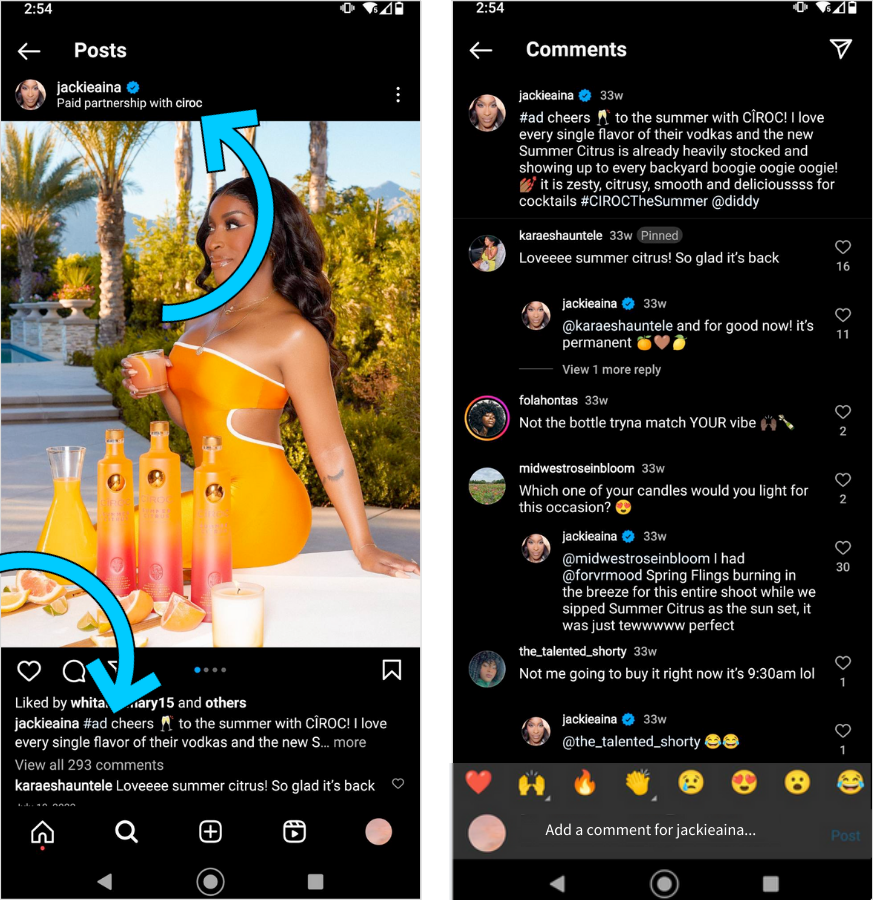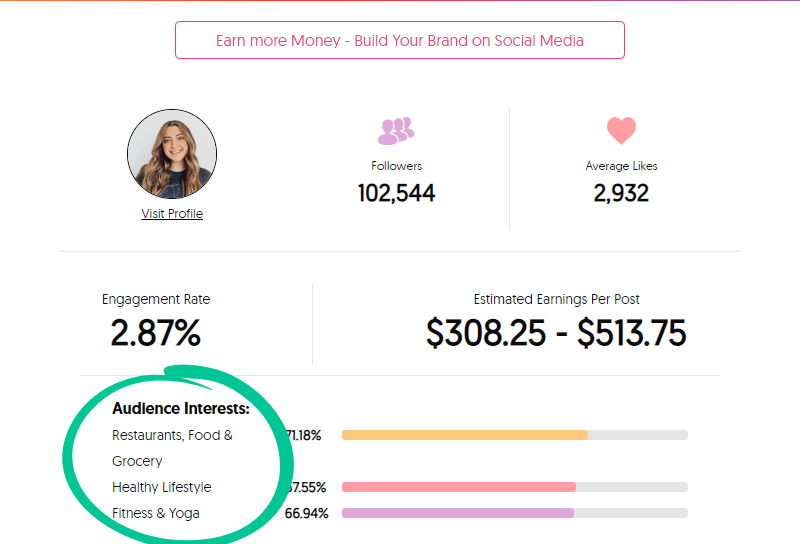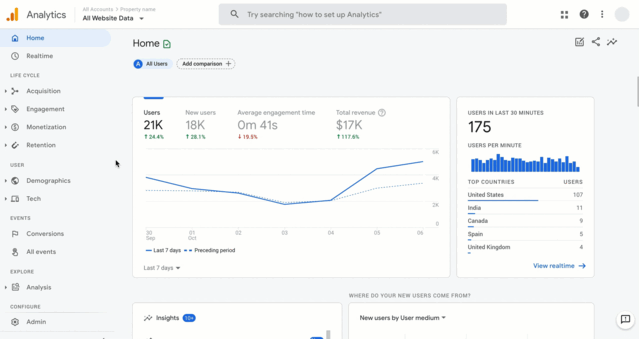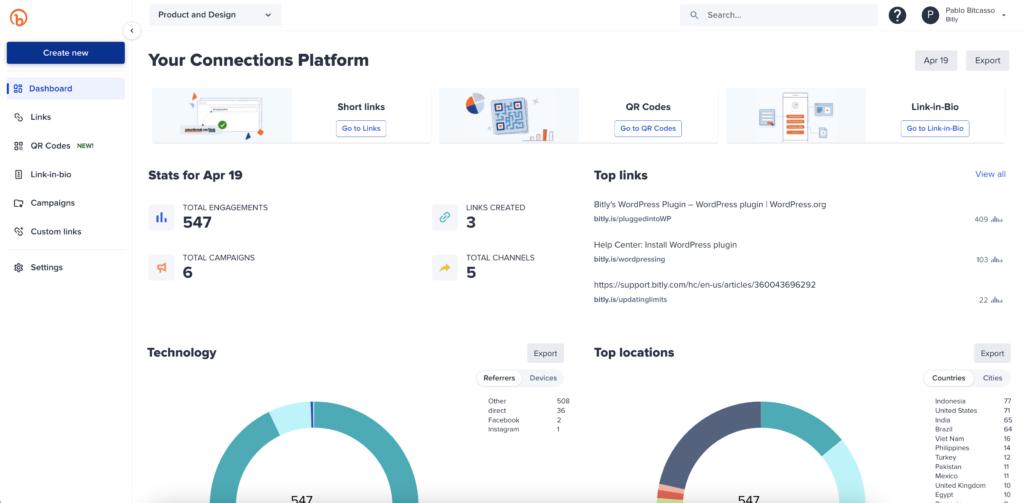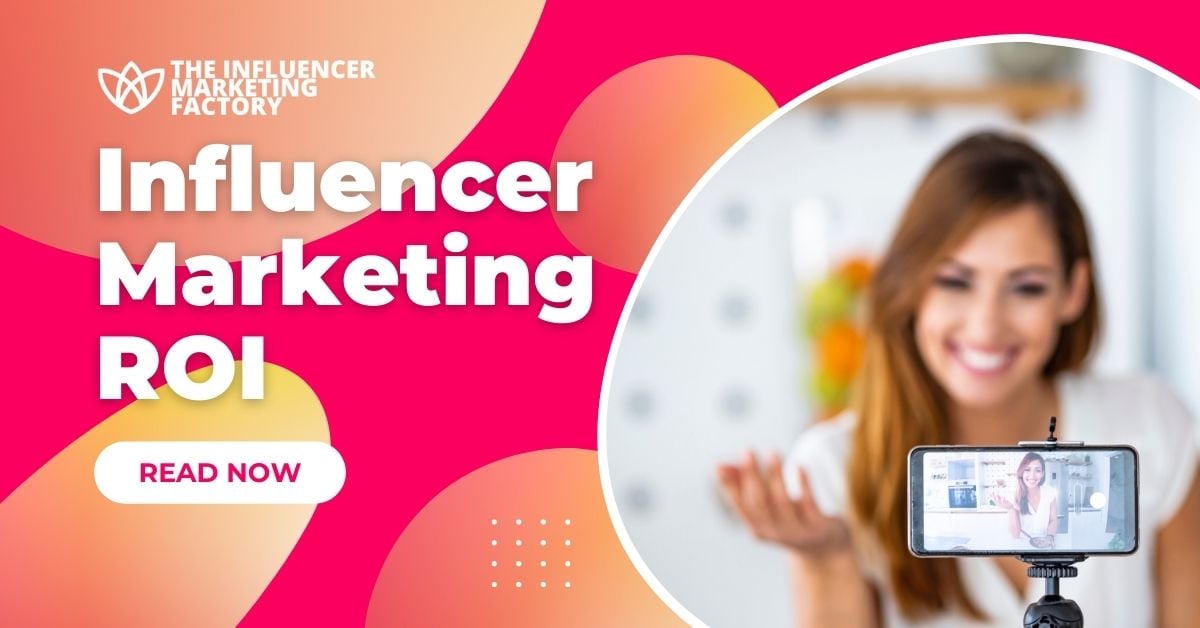
31 Jul Influencer Marketing ROI in 2023
Summary
Influencer Marketing: The Challenge of Measuring Success
These days, influencer marketing is all the rage. It’s gaining momentum fast, but there’s one big hurdle that businesses face: measuring the influencer marketing ROI (return on investment). Some legitimate worries and misconceptions surround the whole ROI issue, and these can sometimes stop brands from trying out influencer marketing at all.
Investing in Influencers: What Does It Take?
To launch a successful influencer campaign on TikTok, YouTube or Instagram, brands need to set a budget. It’s a partnership, after all, and influencers charge for their services. So how do the brands and influencers decide the cost? They weigh factors like:
- The influencer’s social reach: This refers to how many followers they have across various platforms.
- The type of sponsored content: This could be anything from an Instagram post to a YouTube video, or even a Twitch activation.
- The length of the partnership: For example, a single Instagram Story might cost less than a series of videos over several months.
Navigating the ROI Jungle
It’s one thing to spend money on an influencer, but how do you measure the success of that spending? Marketers must understand all the costs, not just the obvious ones like sponsorship fees. Hidden costs can really impact the ROI.
The article sheds light on these hidden costs and helps marketers understand how to measure success in terms that make sense to them.
Breaking Down the Influencer Marketing ROI Formula
Generally, ROI is a percentage that shows the profit yield for every dollar spent. The basic equation looks like this:
(Revenue/Cost) x 100
For instance, if you spend $10,000 on a campaign that makes $20,000, your ROI is positive. It’s a triumph! But remember, this can get complex in real life.
Campaign Goals: Are You Raising Awareness or Looking for Direct Responses?
Before you jump into influencer marketing, you need to decide your goals, as these will guide how you measure success.
- Brand Awareness Goals: If you’re trying to boost how recognizable your brand is, the metrics might include social reach, engagement, and media mentions. It’s a bit trickier to measure, often requiring agencies and surveys to assess.
- Direct Response Goals: If you’re looking for an immediate reaction from the audience, you’ll focus on different Key Performance Indicators (KPIs).
Digging Deeper into Brand Awareness Metrics
@influencermarketing Our influencer campaign for @iloveicecreamcakes 🍦🍰#influencermarketing #marketing #marketingagency #icecream #cake
How exactly can you measure brand awareness? Here are some key Influencer Marketing KPIs:
- Social Reach: This includes the influencer’s followers, subscribers, and overall impressions across channels.
- Engagement: Look for likes, comments, sentiment, shares, and mentions.
- Press and Traffic: Don’t forget to monitor media mentions and website traffic.
Understanding Social Reach: A Closer Look
- Followers & Subscribers: Add up the influencer’s followers across platforms like Instagram and YouTube.
- Impressions: This refers to the number of times users have viewed a social post. It’s a crucial metric to understand the campaign’s reach, and you can find this data through the analytics platforms of each social media channel.
In conclusion, influencer marketing offers a wide array of exciting possibilities. But to make the most of this vibrant channel, brands must navigate the complexities of ROI. With the right insights and understanding, they can turn the potential challenges into resounding successes.
What is Engagement?
Social media engagement is all about the relationship between the content and the audience. It tells us how well people are receiving and interacting with a post, using various Key Performance Indicators (KPIs). Let’s take a closer look at some of these indicators.
Engagement KPIs
- Likes: The digital equivalent of a thumbs up, a ‘like’ symbolizes appreciation and can boost a post’s visibility across different platforms. Some channels, like Instagram, express likes through a heart, while YouTube uses a thumbs up.
- Dislikes: Platforms like YouTube and Facebook allow users to dislike posts. This dislike feature, alongside the like-to-dislike ratio, can be a strong indicator of audience resonance.
- Comments & Social Sentiment: Comments reflect the post’s popularity, and the content of these comments can reveal the user’s sentiment towards your brand, product, or content. Positive indicators include brand engagement, compliments, enthusiasm, and the use of branded hashtags.
- Shares: When someone shares your content, they endorse it, spreading it to new audiences. Different platforms offer various sharing options like retweets on Twitter, repins on Pinterest, and reposting on Instagram.
- Follower Growth: Tracking average follower growth, especially during influencer campaigns, helps to understand the organic growth versus influencer-driven growth.
- Mentions & Hashtags: Users mentioning your brand by name or incorporating brand-specific hashtags amplifies exposure and creates buzz around marketing campaigns.
- Dark Social or DMs: These private interactions include saving posts, direct messaging, and emailing social content links.
- Press & Media: Media mentions enhance brand awareness and produce a halo effect, increasing traffic from various sources.
Direct Response in Influencer Marketing
Direct response drives specific actions like sales, signups, or downloads. Metrics to measure this include:
- Purchases: Analyzing sales through revenue, order value, or cost-per-acquisition.
- Signups: Subscriptions, account creations, or memberships.
- Click-Through Rate (CTR): Number of times a link in a promotional post is clicked.
- Downloads: Digital products such as apps, ebooks, or software.
The Cost of Influencer Marketing
Investing in influencer marketing involves various costs like:
- Time & Staffing: Hours spent on research, negotiation, and relationship management.
- Software Costs: Monthly fees for specialized influencer marketing platforms.
- Influencer Marketing Agency Fees: Full-service agencies offer benefits like time savings, lower influencer rates, and data-driven campaigns.
Costs and Considerations in Influencer Marketing
1. Fees for Influencers
Influencers are paid by brands to create promotional content. This pay is usually in cash, but up-and-coming influencers may accept high-value products or travel accommodations. As the industry matures, these trade agreements are becoming less frequent, while professional influencers continue to monetize their following.
Different tiers of influencers charge accordingly:
- Nano-influencers (<1,000 followers): A few hundred dollars per post.
- Macro-influencers (>1,000,000 followers): Tens of thousands of dollars per post.
Factors affecting these fees include:
- Popularity: Total followers across social platforms.
- Engagement: How audiences interact with content, which can lead to additional income.
- Production Quality: Higher quality work may warrant higher fees.
- Niche Skills: Specializations like baking, painting, and humor can translate into higher rates.
- Past Performance: A solid history with brands justifies higher fees.
- “It” Factor: The unique appeal that makes certain influencers particularly desirable.
2. Providing Product Samples
Brands need to give physical samples to influencers or allow them to experience the service before creating content.
3. Content Production Costs
Generally, the influencer covers costs for photography and editing. Brands may be responsible for more elaborate campaigns, such as travel, props, costumes, makeup, and additional talent.
4. Promoting Posts
Brands can pay to further promote an influencer’s post to gain more impressions.
5. Legal Costs
Developing contracts and complying with legal standards (like FTC guidelines) can be costly but is essential to avoid legal trouble.
6. Measurement & Tracking
Measuring return on investment (ROI) requires:
- Analytics tools and development resources.
- Time spent on data analysis.
- Manual collection of qualitative results.
7. ROI by Social Media Channel and Post Format
Different channels and formats have varying capabilities to measure ROI.
- Strong Correlation to ROI: Instagram Stories, YouTube videos, and sponsored blog posts. These allow for more direct interaction and engagement tracking.
- Weaker Correlation to ROI: Instagram in-feed posts (difficult to measure direct response) and Twitch activations (difficult to track engagement with the brand).
8. Tools for Measuring & Tracking
Brands need to choose the right tools to track key performance indicators (KPIs) before launching campaigns.
By understanding these factors, brands and influencers can navigate the ever-evolving world of influencer marketing, maximizing engagement, and ROI. Whether dealing with emerging or established influencers, the intricacies of fees, legalities, production, promotion, and measurement play a vital role in the success of any influencer marketing strategy.
Effective Methods to Monitor Marketing Campaigns
Website Performance Tracking Tools
Google Analytics (GA): A prevalent tool for examining website activity. GA offers various tracking functions at no cost, such as traffic and unique visitor metrics. Other platforms like Adobe Analytics, Tableau, and Salesforce can also be integrated or used alternatively to gather similar insights.
Social Media Analysis Tools
Native Analytics Tools: Social media platforms often provide built-in tools to measure metrics like views, likes, comments, hashtags, etc. The data available varies depending on the social media site.
Third-Party Social Media Analysis Tools: These tools can provide a more comprehensive view by pulling data from multiple sources, including Google Analytics or a CRM system. Tools like Hootsuite, Sprout Social, and HypeAuditor are widely used for complex campaigns.
Qualitative Insights
Brand sentiment and affinity are best gauged through qualitative research. Algorithms in third-party tools can analyze comments for qualitative data. Smaller campaigns might opt for manual analysis.
Using Promotional Codes
Unique promo codes for influencer campaigns can be effective in tracking conversions. Whether it’s a discount on a purchase or a special offer for signing up, these codes also encourage impulse buying.
Monitoring Click-Through Rates (CTR)
Trackable links are essential for measuring CTR. Ways to track these links include:
- Link shorteners (e.g., Bitly)
- Unique UTM codes
- Custom URLs for individual influencers
- Vanity URLs
With GA, companies often use unique UTM codes per influencer to monitor metrics like clicks and sales.
Custom Landing Pages
Creating a dedicated landing page customized for an influencer’s audience enables tracking visits and conversions specifically from the influencer’s posts.
Conversion Pixels in Paid Campaigns
This is a 1x1px image placed on a page linked to a sponsored post. It counts as a visit when loaded and is often used in paid social media campaigns like Facebook Ads.
Evaluating the Success of Influencer Marketing Campaigns
1. Assessing Costs
- Account for Direct Costs: Include influencer fees, agency fees, production costs.
- Evaluate Tools Used Across Multiple Campaigns: Consider costs for recurring subscriptions and split them accordingly if used across different campaigns.
2. Quantifying Returns
- Direct Response Metrics: Include factors like purchases and subscribers, calculating values based on averages and existing sales funnel data.
- Brand Awareness Metrics: These values may vary widely across industries and need to be established individually.
Guidelines to Enhance Influencer Marketing ROI
Ensuring a positive ROI isn’t a guarantee. Collaborating with experts or having an experienced influencer manager helps. Here are some strategies to consider:
- Focus on one clear call-to-action.
- Provide specific talking points for a clear message.
- Vet influencers thoroughly.
- Give influencers creative freedom for more authentic content.
- Consider interactive elements like events, giveaways, or exclusive offers.
- Constantly refine and learn from various campaigns, embracing a process of continuous improvement.
By following these steps, marketers can create more effective, measurable campaigns, and calculate a clear ROI on their influencer marketing strategies.

